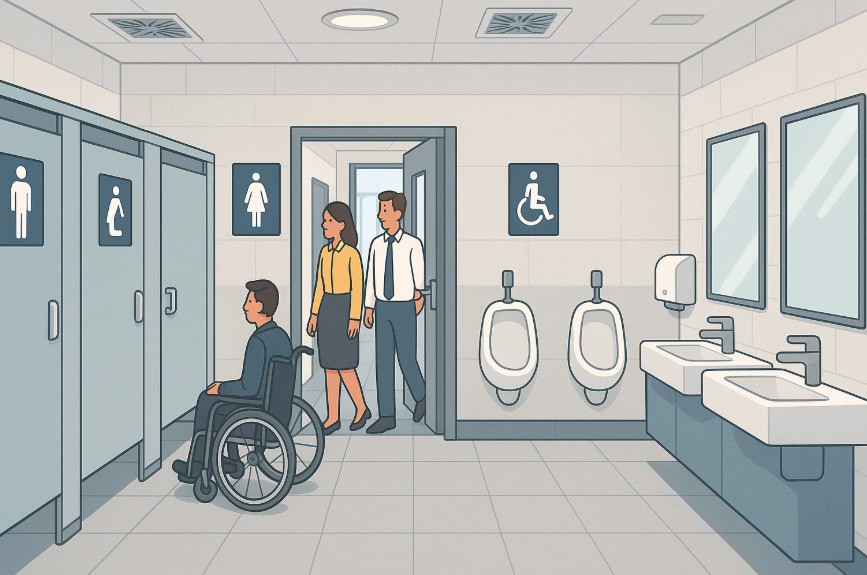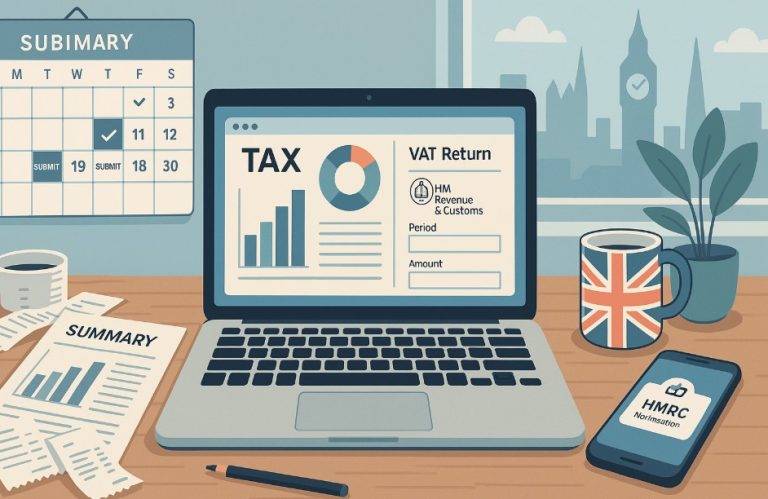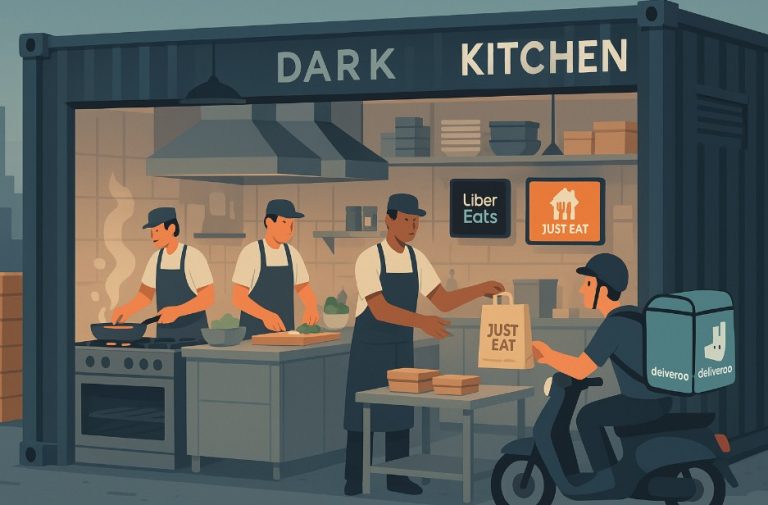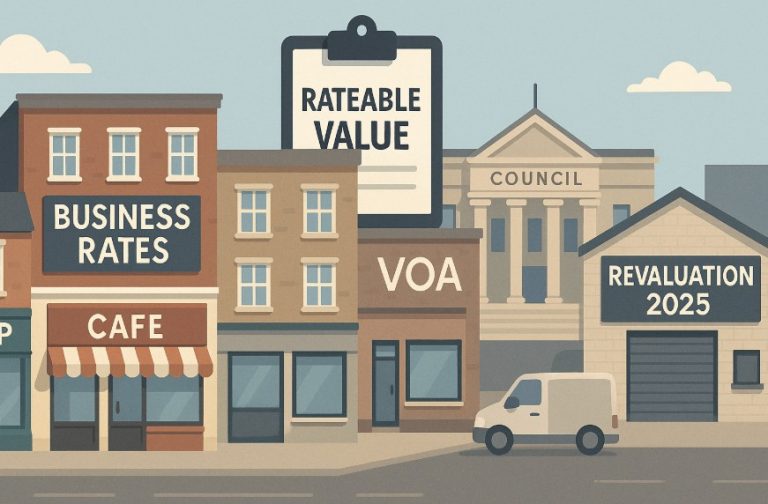How Many Toilets Per Employee in the UK?
According to the Workplace (Health, Safety and Welfare) Regulations 1992, every employer in the UK is legally required to provide an adequate number of toilets and washing facilities for employees. These aren’t just suggested guidelines they are enforceable regulations that can result in fines or other legal consequences if neglected.
But what exactly qualifies as “adequate”? How many toilets should be available depending on the number of employees? And what additional considerations do specific industries need to be aware of?
This guide breaks down the legal requirements, Health and Safety Executive (HSE) guidance, and industry best practices to help UK businesses remain compliant and maintain workplace hygiene and employee wellbeing.
What Are the Legal Requirements for Toilets in UK Workplaces?
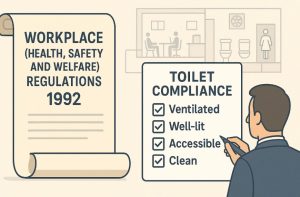
The foundation of workplace toilet regulation in the UK is set by the Workplace (Health, Safety and Welfare) Regulations 1992, particularly Regulation 20: Sanitary Conveniences. This regulation outlines the essential conditions that must be met to ensure workplace toilets are both suitable and sufficient.
Key Legal Requirements
- Toilets must be located at readily accessible places within the premises.
- All washroom areas must be adequately ventilated and lit.
- Facilities must be kept in a clean and orderly condition at all times.
- Separate toilet facilities for men and women must be provided unless each convenience is enclosed in a lockable room.
- Toilets must be equipped with washbasins, hot and cold (or warm) running water, soap or hand sanitiser, and hand-drying provisions.
These regulations apply across all workplaces whether it’s an office, shop, construction site, school, or leisure facility and are enforced by the Health and Safety Executive (HSE).
How Many Toilets Are Needed Per Number of Employees?
The required number of toilets and washbasins varies based on whether facilities are unisex, gender-specific, or designated for male or female staff only. The tables below summarise the HSE’s recommended minimum provision.
Toilet and Washbasin Provision for Mixed Use or Female Staff
|
Number of Employees
|
Toilets Required | Washbasins Required |
| 1 to 5 | 1 | 1 |
| 6 to 25 | 2 | 2 |
| 26 to 50 | 3 | 3 |
| 51 to 75 | 4 | 4 |
| 76 to 100 | 5 | 5 |
| Over 100 | Add 1 per 25 employees | Add 1 per 25 employees |
These numbers are based on the maximum number of people likely to be in the workplace at any one time.
Toilet Provision for Male-Only Use (With Urinals)
|
Number of Male Staff
|
Toilets | Urinals | Washbasins |
| 1 to 15 | 1 | 1 | 1 |
| 16 to 30 | 2 | 1 | 2 |
| 31 to 45 | 2 | 2 | 2 |
| 46 to 60 | 3 | 2 | 3 |
| 61 to 75 | 3 | 3 | 3 |
| 76 to 90 | 4 | 3 | 4 |
| 91 to 100 | 4 | 4 | 4 |
| Over 100 | Add 1 per 50 employees | Add 1 per 50 employees |
Add 1 per 50 employees
|
Note: Employers should provide at least one toilet in each male facility and consider privacy screens between urinals.
Are Gender-Specific Toilets Required by Law in the Workplace?
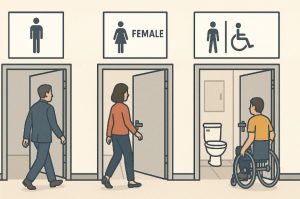
Yes. Unless each cubicle is fully enclosed and lockable, the law mandates separate facilities for men and women. This ensures employee privacy, dignity, and comfort.
Employers must also provide accessible toilets that meet the requirements of the Equality Act 2010 and the Building Regulations Part M. These toilets should be easy to reach, clearly marked, and equipped with accessible features such as grab rails and emergency assistance cords.
What Are the Responsibilities of Employers Regarding Workplace Toilets?
Employers have a legal duty of care to ensure toilets meet the following standards:
- Clean and hygienic, with regular cleaning schedules
- Well-lit, ventilated, and stocked with consumables like soap and hand towels
- Equipped with clear signage for gender-specific or unisex use
- Available in sufficient numbers and accessible to all employees, including those with disabilities
Failure to uphold these responsibilities can result in HSE intervention, employee complaints, and legal action. Beyond legal compliance, maintaining clean and functional toilets also contributes to employee morale and the professional image of the company.
Are There Different Toilet Requirements for Certain Industries?

Yes. While the basic legal requirements remain the same, different industries may need to adapt toilet and washroom provision based on public usage, environmental demands, or specific workforce needs.
Offices, Shops, and Factories
| Female Employees | Toilets (WCs) | Washbasins |
| 1 to 5 | 1 | 1 |
| 6 to 15 | 2 | 2 |
| 16 to 30 | 3 | 3 |
| 31 to 45 | 4 | 4 |
| 46 to 60 | 5 | 5 |
| 61 to 75 | 6 | 6 |
| 76 to 90 | 7 | 7 |
| 91 to 100 | 8 | 8 |
| Over 100 | Add 1 per 25 employees | Add 1 per 25 employees |
| Male Employees | WCs | Urinals | Washbasins |
| 1 to 15 | 1 | 1 | 1 |
| 16 to 30 | 2 | 1 | 2 |
| 31 to 45 | 2 | 2 | 2 |
| 46 to 60 | 3 | 2 | 3 |
| 61 to 75 | 3 | 3 | 3 |
| 76 to 90 | 4 | 3 | 4 |
| 91 to 100 | 4 | 4 | 4 |
| Over 100 | Add 1 per 50 employees | Add 1 per 50 employees |
Add 1 per 50 employees
|
Retail Spaces and Shopping Centres (over 1,000 m²)
| Sanitary Appliance | Male Customers | Female Customers |
| Toilets (WC) | 1 per 500, +1 per 1,000 males | 1 per 100 up to 500, +1 per 200 |
| Urinals | 2 for first 500, +1 per 500 | N/A |
| Washbasins | 1 per toilet, +1 per 5 urinals | 1 per toilet + 1 per 2 additional toilets |
Schools
Toilet provision is based on student age:
- Nurseries (ages 3-5): 1 toilet per 10 children, no fewer than 4
- Primary Schools: 1 toilet per 10 (under 5), 1 per 15 (over 5)
- Secondary Schools: Boys—1 WC & 1 urinal per 20; Girls—1 WC per 20
- Washbasins: 1 per fixture, with additional basins beyond 3 appliances
Leisure Centres with Swimming Pools
- Male: 2 toilets for up to 100 users, +1 per additional 100
- Female: 1 toilet per 5 up to 50 users, then 1 per 10 up to 100, then 1 per 50
- Urinals: 1 per 20 males up to 100, +1 per 80 after
- Showers: 1 per 10 users
- Washbasins: 1 per WC, +1 per 5 urinals
Religious Buildings
- 1 toilet for up to 5 staff or volunteers
- 2 toilets for 6 to 25 users
- Additional toilets based on expected congregation size
- Separate and accessible facilities recommended
Public Buildings (Cinemas, Theatres, Museums)
| Visitor Type | Toilets Required | Urinals | Washbasins |
| Male | 2 per 250, +1 per 250 after | 2 per 50, +1 per 50 after |
1 per WC + 1 per 5 urinals
|
| Female | 2 per 20 up to 500, +1 per 25 after | N/A |
1 per WC + 1 per 2 extras
|
What Happens If a Business Doesn’t Comply with Toilet Regulations?
Failure to meet the legal requirements set by HSE can have serious consequences. These include:
- Enforcement notices or prohibition orders from the HSE
- Legal claims and compensation by affected employees
- Negative publicity and reputational damage
- Poor employee morale and high turnover
HSE has the authority to inspect workplaces and demand improvements where standards fall below the required level. Employers are strongly encouraged to carry out regular audits of their toilet and washroom facilities.
What Are Best Practices for Managing Workplace Toilet Facilities?
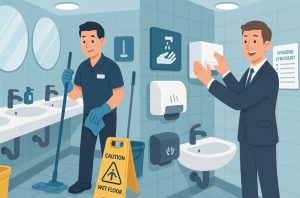
In addition to legal compliance, there are practical measures employers can take to improve hygiene and employee wellbeing:
- Provide touch-free taps and dryers where possible
- Use sensor-activated lighting to conserve energy and improve convenience
- Install air fresheners or ventilation fans to enhance comfort
- Regularly survey employees for feedback on toilet facility conditions
- Consider hiring professional cleaning services for larger offices
Is Your Business Compliant? A Toilet Provision Checklist
- Have you assessed the number of staff on-site during peak hours?
- Are the toilets separated by gender or fully enclosed and lockable?
- Is each toilet facility stocked with soap, water, and drying options?
- Are disabled-access toilets available and easy to access?
- Are cleaning schedules documented and followed?
Businesses that regularly audit and improve their facilities are more likely to retain staff and present a professional brand image.
Why Is Providing Adequate Toilets Essential for Business Success?
While legal compliance is a non-negotiable aspect, the quality and quantity of toilet facilities reflect your company’s values and workplace culture. A clean and adequate washroom can:
- Reduce illness and absenteeism
- Boost employee morale and productivity
- Promote a positive employer brand
- Prevent conflict and legal issues
By proactively reviewing your toilet provisions, you’re not just avoiding fines, you’re investing in your workforce’s wellbeing and your business’s reputation.
Frequently Asked Questions (FAQs)
What are the HSE guidelines for workplace toilets?
The HSE mandates clean, accessible toilets in adequate numbers based on workforce size, including washing facilities with hot water, soap, and hand drying.
How many toilets are required in a small office with 20 staff?
You need at least 2 toilets and 2 washbasins, based on HSE guidelines for mixed or female-only facilities.
Can unisex toilets replace gender-specific ones?
Yes, but only if each cubicle is self-contained, with a lockable door and its own washing facilities.
Are separate toilets required for disabled staff or visitors?
Yes. Accessible, unisex toilets must be provided in accordance with the Equality Act 2010 and Building Regulations Part M.
What are the toilet ratios in schools?
Ratios vary by age group. Nurseries need 1 toilet per 10 children, primary and secondary schools follow modified ratios for gender and age.
Do retail spaces follow different guidelines?
Yes. For spaces over 1,000 m², customer toilet ratios are based on foot traffic, with different figures for male and female users.
Who enforces workplace toilet laws in the UK?
The Health and Safety Executive (HSE) and local authorities enforce workplace welfare and toilet standards through inspections and complaints.

